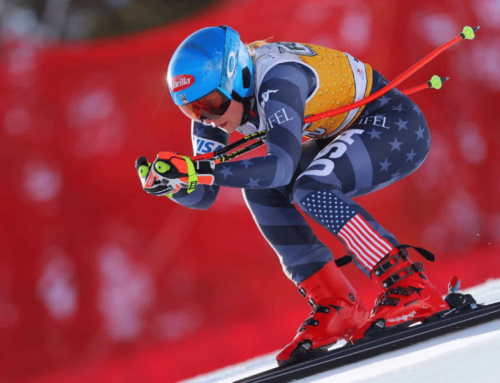Battling injury, anxiety and working on her mental game, Breezy Johnson is ready for the season
Breezy Johnson once considered herself lucky. Johnson recalls, as a new member of the U.S. Ski Team, many of her teammates’ careers were sidelined due to early injuries. She wasn’t one of those people. Johnson remained healthy and strong early in her career and made it all the way to the Olympics injury-free. When Johnson’s first of three knee injuries came in 2016, she viewed it almost as a relief because deep down she felt like she was paying her dues and was now a “real” ski racer.

Johnson worked hard for a quick recovery from a tibial plateau fracture in March 2016, returning to snow four months later. She made a full recovery before heading into the 2018 Olympics, grabbing an impressive seventh-place finish in the downhill. Johnson’s momentum was strong after an Olympic year, however, mental confidence provided challenges as she fought to overcome the fear of another injury. And, unfortunately, those fears were realized when Johnson suffered an ACL tear during a 2018 training block in Chile.
“There is no guarantee that because you got injured you’re never going to get injured again,” said Johnson. “That was really tough to deal with.”
Johnson returned to snow in March of 2019 where she spent the next three months in the western United States slowly back on her skis. On a June giant-slalom training day in Mammoth, Johnson suffered a fluke crash that left her with a PCL and MCL tear in the opposite knee, just nine months after her ACL tear. She was shattered. Johnson had put everything into her ACL recovery, working harder than ever to be back skiing downhill seven months post-surgery. Johnson knew she had another tough recovery in front of her, but this time there was a shorter window for her return to competition in the 2019-20 season.
“There are some people who come back and their body is fine, and they say they’re fine, but they never reach that same level of skiing again,” said Johnson. “That is what I feared and was the toughest thing to get over. Because when you haven’t raced you have nothing to counter the voice in your head saying ‘maybe you suck.’”
During her time away from racing, Johnson became anxious. After talking with her doctor, she realized, while her body needed to heal, she needed to balance that against what her mind needed — and her mind needed to race.
Like many athletes, Johnson had a long history of working with sports psychologists. When it came to injury recovery, she refused to be “man-splained” about visualization. When introduced to her current sports psychologist, who for the sake of anonymity we’ll simply call “Alex,” they had a mutual understanding of what she was asking for. He was able to work with Johnson to overcome the desire for perfection and subsequent anxiety that was manifesting from the sport.
“I was hesitant to go to see Alex, I actually used the term ‘man-splain’ when I met him,” Johnson recalled. “Alex has been really helpful now to work on all the other stuff outside of skiing, like relationships and being a better person. That way I can really enjoy the sport and enjoy my time as a ski racer because you know you don’t get to do it forever.”
When Johnson finally returned to snow in November 2019, it was like she had never left. She didn’t spend any time trying to figure out how she felt on her skis. Through visualization and mental confidence, Johnson was able to shift her focus to her new plan. Her motto “good skiing is safe skiing” led her back to the basics of the sport, such as standing over your outside ski, because she knew the safest skiing was also going to be her fastest.

“The tougher part in some ways, and something I don’t think I ever truthfully got over, is I was really greedy,” said Johnson. “Because after the second injury I just wanted to race. I didn’t know when or if I was ever going to get injured again, I just had to enjoy this moment, ski as fast as I can, and deal with tomorrow, tomorrow.”
Johnson has always said what separates the top group of women’s speed skiers from the second-tier group is confidence. If you push out of the start gate looking for speed, aerodynamics, and standing on your outside ski, Johnson believes you’re halfway there.
“I remember before pushing out of the start gate of my first race back telling myself I have been through too much to not ski my fastest,” said Johnson. “That was just what I had to do to get through. I just imagine what quarantine would have looked like if I didn’t race.”
After last season was cut short due to COVID, Johnson was grateful to have raced. Her outlook has shifted to a mindset that everything from this point forward is just an added bonus.
“You know that ski racing isn’t going to last forever,” said Johnson. “I want to really enjoy it and not sweat the small stuff because at the end of the day, there isn’t time for that. I’m just happy to be skiing.”
Johnson spent her summer between her hometown Jackson Hole and training at the Center of Excellence in Park City. Her body is feeling strong going into the 2020-21 season and she looks forward to a full racing schedule with the World Championships on the calendar in Cortina.





















